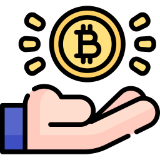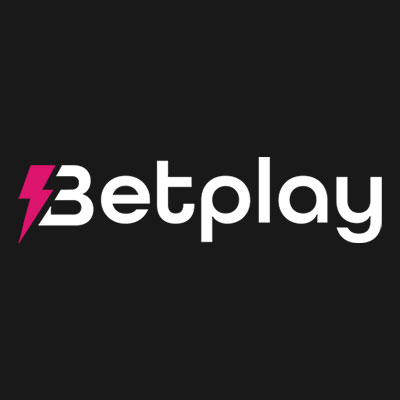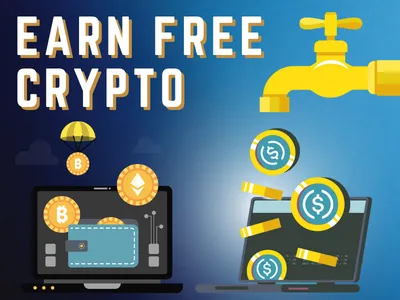51% attack
A 51% attack is a type of attack on a blockchain network where a single entity or group of entities controls more than 50% of the network's mining power. This enables the attacker to manipulate the blockchain's transactions and potentially double-spend coins or rewrite transaction history, which can lead to a loss of trust and value in the network.
51% attack protection
51% attack protection refers to measures taken by blockchain networks to prevent or mitigate the impact of a 51% attack. Some common protection measures include increasing the network's mining difficulty, implementing consensus mechanisms that require multiple validators to confirm transactions, and encouraging decentralization by discouraging large mining pools or validators. Additionally, some networks offer bug bounties or other incentives to encourage responsible disclosure of potential vulnerabilities.
Abenomics
Abenomics refers to a set of economic policies implemented by the Japanese government under the leadership of Prime Minister Shinzo Abe in 2013. The policies aim to revive the country's economy through a combination of monetary easing, fiscal stimulus, and structural reforms.
Accredited investor
An accredited investor is an individual or entity that meets certain criteria, typically related to their income or net worth, that qualifies them to participate in private investments and other high-risk financial opportunities that are not available to the general public. Currently, to qualify as an accredited investor, the individual will have to provide proof of an income over 200,000 USD or a net worth of 1 million USD, excluding the main residence.
Activist Investor
An activist investor is an individual or group that purchases a significant stake in a company with the intention of influencing its decision-making processes. Activist investors often use their ownership position to push for changes that they believe will increase the value of their investment, such as replacing management or restructuring the company.
Address
Crypto addresses are alphanumeric strings used to transfer, receive, and store bitcoin. Bitcoin and Ethereum use different addressing systems. It uses public and private keys to sign transactions and prove asset ownership.
AFK
AFK stands for "Away From Keyboard" and is commonly used in online gaming and chat environments to indicate that a user is temporarily unavailable. In the context of cryptocurrency trading, AFK can indicate that a trader is not actively monitoring their trades.
Air gapped
An air-gapped system is a computer or network that is physically disconnected from the internet or any other external network, making it highly secure and protected from cyber threats such as hacking and malware attacks.
Airdrop
To promote cryptocurrency adoption, crypto airdrops deliver free tokens. It lets users trial new cryptocurrencies if they fit the criteria. Before engaging, check for frauds.
Algorithm
An algorithm is a set of instructions or rules that a computer program follows to perform a specific task or solve a problem. In the context of cryptocurrency, algorithms are used for various purposes, including mining, trading, and security.
All Time High (ATH)
The all-time high (ATH) refers to the highest price level that a cryptocurrency or any other asset has ever reached. ATH is an important metric for investors and traders, as it indicates the potential for significant gains, but it can also serve as a warning of potential market bubbles.
Altcoin
"Altcoin" refers to a cryptocurrency other than Bitcoin. Each has its own set of rules, properties, and specific use cases. Altcoins could be completely new technologies or forks of existing cryptocurrencies.
AML
"Anti-Money Laundering" policies and procedures prevent money laundering and terrorist financing. AML requirements require crypto firms to verify identities, conduct customer due diligence, and report questionable transactions.
Anarcho Capitalism
Anarcho-capitalism is a political philosophy that advocates for the complete abolition of the state and the establishment of a free market system where all goods and services are provided through voluntary exchange and private property rights are fully respected. Anarcho-capitalists believe that the government is inherently coercive and that its functions can be better served by market mechanisms.
Arbitrage
Taking advantage of price differences between different cryptocurrency exchanges or markets. Traders buy cryptocurrencies on one exchange where the price is lower and sell them on another where the price is higher, making a profit from the price difference.
Ascending/Descending Channels
Ascending and descending channels are technical analysis tools used to identify trends in price movements. An ascending channel is formed by drawing a trendline connecting a series of higher lows, while a descending channel is formed by connecting a series of lower highs. These channels can help traders make buy or sell decisions based on whether the price is expected to continue trending in the same direction or break out of the channel.
ASIC or Mining Rig
ASIC stands for "Application-Specific Integrated Circuit", and it refers to specialized hardware such as High end GPU’s being used for mining cryptocurrencies.
ATH / ATL
“All-Time High / All-Time Low” This refers to the highest or lowest the price has ever been for a given asset.
Atomic Swap
An atomic swap is a smart contract technology that enables the peer-to-peer exchange of one cryptocurrency for another without using centralized intermediaries.
BECH32
A very new Bitcoin address format used in the crypto world that offers improved security and lower transaction fees. It is important to note that it's all lower case or sometimes all upper case, never a mixture.
Bart
"Bart" or "The Bart Simpson Formation" is a sharp price change that resembles Bart Simpson's head. Market manipulation creates this. A cryptocurrency surges strongly, stays flat, and sinks back to where it started.
Bear Market
A bear market is the reverse of a bull market, where outlooks are negative as market prices seem to be on a downward trend.
BFT
Byzantine fault tolerance allows a distributed system to survive a given number of detrimental nodes. BFT is used in crypto to reach consensus among blockchain nodes. In decentralized systems, BFT algorithms are fault-tolerant and attack-resistant.
BIP
The Bitcoin Improvement Protocol is a design document outlining proposed changes or improvements to the Bitcoin protocol. For example, BIP38 concerns the protocol for encrypting a paper wallet.
Bitcoin
Bitcoin, the first cryptocurrency, uses a peer-to-peer blockchain network. Users transact directly. Cryptography verifies network transactions. Blockchains record them. Satoshi Nakamoto created Bitcoin. 2009 saw its open-source release.
Bitcoin Core
Bitcoin Core is a software program, initially just named Bitcoin but later renamed, that serves as the reference implementation for the Bitcoin network, providing the backbone of the entire Bitcoin system.
Bitcoin Maxi
A Bitcoin Maxi is a term used to describe an individual who strongly believes in the superiority of Bitcoin over other cryptocurrencies and is highly committed to its success. Bitcoin Maximalists argue that Bitcoin's decentralization, security, and limited supply make it the best store of value and digital gold.
Block
A unit of the code that comprises the blockchain It is a record of transactions that have occurred since the last block was created and a confirmation of previous transactions. Each block links to the block before it, thus creating a full chain back to the original, or “genesis” block.
Blockchain
A digital, decentralized, public ledger of all bitcoin transactions that grows chronologically as "completed" blocks or the most recent transactions are recorded. Market players can track digital currency transactions without central record-keeping. Full nodes automatically download the blockchain.
Block Height
Block height refers to the number of blocks that have been added to a blockchain network since its inception. Each block contains a record of transactions and a unique identifier, and the block height is used to identify the chronological order of these blocks in the network's ledger.
Block Reward
Miners, master node owners, or validators create blocks, and the creation of a block rewards them with a block reward. This block reward initializes mining. This takes the form of newly minted cryptocurrency, which is used as an incentive for participants to help keep the blockchain running.
Block Size
Block size refers to the maximum amount of data that can be included in a single block on a blockchain network. Larger block sizes can allow for faster transaction processing but can also lead to increased network congestion and higher transaction fees.
Bollinger Bands
Bollinger Bands are a technical analysis tool used to measure a cryptocurrency's price volatility. The bands consist of a moving average line and two standard deviation lines above and below the moving average, which can help traders identify potential buying and selling opportunities based on the price's deviation from the average.
Bot
An automated software program or artificial intelligence that performs various tasks, such as market analysis, trading, and portfolio management, without the need for human intervention.
BTD or Buy The Dip
BTD or "Buy The Dip" is a trading strategy used by investors who believe that the price of a cryptocurrency will eventually increase after a temporary dip in price. The strategy involves buying the dip in price and holding the asset until it reaches its target price.
Bubble
A "bubble" refers to an extremely overbought market situation where the price of a particular cryptocurrency rises quickly and unsustainably due to hype, speculation, and irrational exuberance, eventually resulting in a sharp decline in price or crash.
Bull Market
A "bull market" describes the phenomenon where market prices are generally trending upward over a given period and public perception is positive.
Buy Order
Instructions given by a trader on a crypto exchange refer to the purchase of a specific cryptocurrency. The purchase is made at a designated price or lower.
Buy Wall
A large concentration of people executing buy orders on a specific crypto at a given time is represented on a graph as a wall. A "sell wall" usually opposes this wall. This helps to indicate if a pump or strong buying pressure is taking place, potentially creating a support level for the price.
CBDC
A Central Bank Digital currency is the fiat currency of a particular nation or region, issued and regulated by the country’s monetary authority. Thus, CBDC is money that a government establishes and backs through its central bank using blockchain technology.
Chaffing
Chaffing is a privacy-enhancing technique used to obfuscate a user's real message by adding random data to it before sending it over a communication channel. In the context of cryptocurrency, chaffing can be used to improve the anonymity of transactions by adding fake transaction data to hide the real transaction.
Cloud Mining
Cloud mining refers to a process where a miner leases mining hardware from a remote provider and uses their computing power to mine cryptocurrency without having to maintain the hardware themselves. Customers purchase contracts that give them a specific amount of mining power.
Currency Pair
A "currency pair" refers to two different cryptocurrencies that can be traded against each other. It's a market that shows the exchange rate between two coins. The price of one cryptocurrency determines the value of the other one in the pair.
Coin
Refers to a digital asset or token that operates independently of a central bank or government, utilizing blockchain technology to enable peer-to-peer transactions with transparency and security.
Coinbase
The transaction inside a block pays the miner his block reward. The largest Bitcoin broker in the world It allows users to buy, sell, and store various cryptocurrencies, including Bitcoin, Ethereum, and others, through fiat money.
Coinjoin
Gregory Maxwell's Bitcoin anonymization approach is CoinJoin. It conceals Bitcoin transactions and those who are involved by merging them into one. This makes tracing the transaction nearly impossible.
Cold Wallet
Crypto storage that is not connected to the internet refers to a physical device or offline storage device used to store the private keys of cryptocurrencies offline, providing a high level of security against potential cyberattacks or theft.
Confirm
"Confirm”” refers to the process of verifying and adding a transaction to the blockchain. After six confirmations, or about an hour, a Bitcoin transaction is considered unchangeable.
Consortium Blockchain
Organizations run semi-private blockchain networks. The protocol layer is governed by a consortium of businesses. Combining public and private blockchains. Semi-decentralized, permissioned consortium blockchains are multiparty. They can collaborate safely while maintaining network control.
Consensus Protocol
Consensus refers to the method by which blockchain participants enable multiple nodes in a decentralized network to agree on the state of the network or what should be included in the blockchain. The two most prominent consensus mechanisms currently used by crypto networks are proof-of-work and proof-of-stake.
Crosschain
This refers to the intertwined operational abilities or interoperability between two or more relatively independent blockchains. It enables blockchains to speak to one another because they are built in a standardized way.
Cryptocurrency
Cryptocurrencies are digital or virtual assets or currencies that utilize encryption to authenticate payment transfers, safeguard financial transactions, and control unit formation. No central bank controls it. Decentralized blockchain networks like bitcoin power several cryptocurrencies.
Cryptocurrency Agnostic
Cryptocurrency agnostic is a system or platform that is not specific to any particular tokens, cryptos, or altcoins and allows users from different ecosystems to participate, further expanding capacity across existing and new cryptocurrency projects.
Cryptoeconomics
Cryptoeconomics is the study of the economic incentives and behavior in decentralized networks that use cryptography, such as blockchain.
Cryptographic Hashing
Cryptographic hashing secures and authenticates data in applications like blockchains. It uses a hash function to convert any input data into a fixed-size hash value or digest. MD5, MD4, and SHA-256 are hash functions.
Cryptography
Cryptography is used in many areas of computing to safeguard information. Cryptography secures blockchains and cryptocurrencies with the SHA-256 one-way hashing algorithm for proof-of-work and private-key/public-key cryptography for authenticating and confirming Bitcoin transfers.
Crypto kitty
Crypto Kitties are digital collectible cats that are created and traded on the Ethereum blockchain. Each Crypto Kitty is unique and can be bought, sold, and bred using Ethereum tokens.
Cypherpunk
A cypherpunk is a person who advocates for the widespread use of strong cryptography and privacy-enhancing technologies as a means to achieve social and political change.
DAG
(Directed Acyclic Graph), a distributed-ledger or data structure used in some cryptocurrencies instead of blockchain technology, connects transactions directly without miners or blocks for quicker transaction processing and increased scalability.
DAO
A DAO is a corporate entity expressed as transparent rules in many smart contracts. They limit centralization by letting the community vote on proposed modifications and upgrades to the DAO and its products.
dApp
dApps, or decentralized applications, are programs that run on top of blockchain networks and use smart contracts to provide trustless tools and services for end users. The most widely adopted smart contract platform today is the Ethereum protocol, where hundreds of dApps exist.
Day Trading
Day trading refers to the practice of buying and selling cryptocurrencies within a single open and closed trading day with the aim of profiting from short-term price fluctuations.
Decentralized
Decentralized is a word that is used to describe technologies that make use of distributed systems with the aim of providing increased security and redundancy and reducing reliance on governing bodies and centralized intermediaries.
Decentralized Network
A "decentralized network" refers to a distributed system where no single entity has control or authority over the network, meaning anyone can transact on the ledger. Decisions are made through a consensus mechanism among the participants.
DeFi
DeFi, or decentralized finance, is the expanding ecosystem of applications and services that employ blockchain technology and cryptocurrencies to deliver decentralized financial services to end consumers. Hundreds of Ethereum-based DeFi apps let users borrow, lend, and earn cryptocurrency interest. Smart contracts govern user fund flow in DeFi apps.
DPoS
Delegated Proof of Stake (DPoS) is a consensus mechanism used in some cryptocurrencies where token holders can delegate their voting power to a set of nodes, known as delegates or validators, to validate transactions and create new blocks on the blockchain.
DEX
A DEX, or decentralized exchange, is a platform that enables peer-to-peer cryptocurrency trading without a central authority. It runs on a blockchain and allows users to maintain full control of their funds. DEXes offer a more secure and transparent alternative to centralized exchanges.
DHT
(Distributed Hash Table) is a key-value store that coordinates and stores information about decentralized peer-to-peer systems. accomplishing this without a central server. Any node may efficiently obtain a key's value from a DHT.
Difficulty
Difficulty refers to how hard it is to mine a block in a blockchain network. It is adjusted periodically to maintain a steady rate of block creation. The higher the difficulty, the more computing power and electricity are required to mine a block.
Distributed Ledger
Distributed ledgers provide decentralized and secure record-keeping and transaction processing since each node keeps a copy of the ledger. Each network participant has an identical copy of the shared records. All participants get ledger updates.
Double Spending
Double spending may be a cyberattack. Using consensus and cryptographic protocols, blockchain prevents double spending. It guarantees that transaction inputs have not been wasted.
DYOR
Coin influencers advise us to perform our own research before investing in a coin or project. Remember that bitcoin influencers and media sources have distinct aims and motivations. Ask if a news story or review is balanced and factual before believing it.
Encryption
Encryption is the process of encoding data. Data is encrypted to restrict access. Information is protected via blockchain encryption. SHA-256 cryptography provides a 32-byte hash for the Bitcoin blockchain. Hacking attempts have failed thus far.
ERC-20
Ethereum uses ERC-20 as the most commonly used standard for creating crypto-tokens. It allows developers to easily create digital currencies that are immediately compatible with existing infrastructure.
ERC-721
Is Ethereum’s technical standard for non-fungible tokens (NFTs). It generates unique, non counterfeitable tokens. You can use it to create digital collectibles and gaming items or to tokenize unique items in the real world.
Exchange
A place where you can buy, sell, and trade cryptocurrencies for other digital or traditional assets. Some exchanges allow fiat deposits and withdrawals, some only crypto.
Exponential Moving Average
The exponential moving average (EMA) is a technical analysis tool used to track the average price of a cryptocurrency over a specific time period. Unlike simple moving averages, EMAs place more weight on recent price data, which can provide a more accurate representation of the asset's current price trend.
Faucet
A "faucet" is a place or application that rewards users with small amounts of cryptocurrency for completing simple tasks or captcha verification.
Fiat
Fiat currencies, which are not backed by a commodity and are issued by governments. Examples of fiat currencies are the US dollar and the euro. Trading with fiat currencies in the crypto landscape typically requires a trusted, centralized entity to manage your funds.
FOMO
Fear of missing out. Is a widely used term arising from the notion that others are experiencing the benefits of an event while the person having FOMO isn’t. In crypto trading, it usually refers to when a trader thinks they might miss out on a potentially profitable opportunity.
Fork
A fork occurs when a blockchain's existing code is changed or updated, resulting in a split into two separate chains. This can happen with a hard fork or a soft fork. A hard fork is a permanent split, while a soft fork is a backward-compatible upgrade.
FUD
(Fear, uncertainty, and doubt) generally refers to the unsolicited spreading of negative or false information to create panic or doubt in the market, forcing it to behave in a certain way.
Fundamental Analysis
A method of evaluating the intrinsic value of a cryptocurrency while predicting its future performance. It considers such factors as the technological and innovative worth of a product, the people handling it, a token’s distribution model, and its business applications.
Gas
Refers to a cost associated with executing operations on the Ethereum network, including sending transactions and deploying and interacting with smart contracts. It is usually priced in gwei, a small fraction of ether.
Genesis Block
The Genesis block is the name of a blockchain’s first block. It is the prototype of all other blocks in the blockchain and the common ancestor of them. If any block follows the chain backward in time, it eventually leads to the genesis block. It can also not be changed.
Halving
Cryptocurrency miners receive a "halved" payment for adding blocks. 210,000 blocks are mined first. Every four years, this reduces inflation and coinage. The halving affects bitcoin pricing and mining profitability. Block rewards are 6.25 BTC after three halvings.
Hard Fork
A hard fork is a permanent split or protocol change that creates a new coin with a different network. Thus, a blockchain hard fork is a backward-incompatible upgrade. It can also validate invalid transactions.
Hardware Wallet
A small device, roughly the size of a memory stick, that functions as a crypto wallet. The essential security data, like private keys, never leaves the device. The safest way to store crypto funds. A cold wallet and a hardware wallet are often used interchangeably.
Hash
A hash is a string of data or digital fingerprint generated through a complex algorithm to uniquely identify a block of data. Mining performance is also often measured in hash power.
Hash Function
A hash function takes a group of characters called a key and maps it to a value of a certain length called a hash. The hash value is representative of the original string of characters but is normally smaller than the original. Hashing is also used in encryption.
Hash Rate
The Bitcoin network's network-specific calculations per second. 1 tera hash is 1 trillion calculations per second. Higher hash rates improve network security and efficiency since blockchain compromise requires more processing resources. Hash rate indicates mining gear performance and bitcoin network health.
Hedging
Hedging is a risk management strategy used by investors to reduce their exposure to potential losses by taking offsetting positions in related assets. In the context of cryptocurrency trading, hedging can involve buying or selling derivatives such as futures or options to offset the risk of price fluctuations in the underlying asset.
HODL
The name stems from misspelling "hold," which refers to holding assets amid market downturns. It assumes that cryptocurrencies will rise in value over time and that selling during short-term declines may miss profit chances. Some investors prefer HODLing.
Hot Wallet
A "hot wallet" is an internet-connected cryptocurrency wallet that is more vulnerable to hackers or theft. Hot wallets hold daily bitcoin transactions and trading. They are easy to use yet riskier than offline cold wallets. Hot wallets enable transactions on many exchanges and platforms.
Hybrid Blockchain
Hybrid blockchains integrate public and private blockchains. It offers public blockchain transparency and security and private blockchain privacy and management. Supply chain management, banking, and voting systems employ hybrid blockchains.
Hybrid PoW (Proof of Work) / PoS (Proof of Stake)
Blockchain technology validates transactions and creates blocks using hybrid PoW. To improve security and scalability, it combines PoW with another consensus technique like PoS. This creates a decentralized, energy-efficient network.
Hyperledger
Linux Foundation-backed Hyperledger is open-source. It develops corporate blockchain technology and provides a modular framework with tools for constructing custom blockchain solutions for various sectors and use cases. Hyperledger promotes blockchain network interoperability.
Immutability
Blockchain technology guarantees immutability of network data. Cryptographic hashing and consensus generate an irreversible, tamper-proof ledger. Blockchain immutability ensures safe, transparent transactions without middlemen.
ICO
ICOs, or initial coin offerings, utilize tokens to raise funds. Private ICOs are feasible, but crowdsourcing is the norm. Due to fraud and scam risk, ICOs have been regulated.
IEO or Initial Exchange Offering
An Initial Exchange Offering (IEO) is a fundraising method used by blockchain startups to raise funds by selling their tokens directly on an exchange. IEOs typically involve a partnership between the startup and the exchange, which handles the token sale and listing on its platform.
Interoperability
Interoperability allows blockchain networks to share data. This facilitates easy connection between networks and applications, making blockchain technology more adoptable and scalable. Standards, protocols, and bridges enable interoperability.
Interplanetary File System (IPFS)
IPFS is a peer-to-peer network and protocol designed to create a more decentralized and resilient internet. IPFS allows users to store and access files in a distributed and censorship-resistant way by breaking up files into smaller chunks and storing them across a network of participating computers. This means that files can be accessed even if the original uploader is offline, and files are less vulnerable to centralized censorship or shutdowns. IPFS is often used in the context of decentralized applications (dApps) and blockchain technology, as it can be used to store and access immutable data on a distributed network.
IPFS
IPFS is a peer-to-peer file storage and sharing technology. Content addressing and distributed storage make it more efficient and robust than client-server designs. Decentralized storage and content delivery networks employ IPFS.
KYC
KYC, or "Know Your Customer," refers to the process by which a financial service provider must gather and verify information about their customers on registration. Governments enforce this information. They apply in both the customer's and the business’s jurisdictions.
LAMBO
In the crypto world, LAMBO refers to a Lamborghini, a symbol of riches and accomplishment. It exaggerates the urge to make money from bitcoin investments. The word has become a crypto meme.
Ledger
Ledgers record blockchain transactions. Nodes sustain it. Cryptographic algorithms validate transactions on nodes. Ledgers record blockchain activity in a reliable, immutable, and transparent manner.
Liquidity
Liquidity is how easily a cryptocurrency can be purchased or sold without impacting its price. High liquidity indicates many buyers and sellers, making trading more stable and efficient. Liquidity affects bitcoin value and utility.
Lightning Network
The Lightning Network is a Layer 2 scaling solution for blockchain networks such as Bitcoin. It allows for faster and cheaper transactions by creating off-chain payment channels between users. Transactions are settled on the main blockchain only when the payment channel is closed.
Limit Order
Limit orders allow bitcoin traders to purchase or sell at a predetermined price or better. If the market hits the stated price or above, the order is executed. Limit orders help manage risk and regulate bitcoin prices.
MAINNET
A mainnet is the main blockchain network of a cryptocurrency. It is the live and functioning version of the blockchain, where transactions are validated and recorded. Once a cryptocurrency transitions from a testnet or a prototype, it is launched on the mainnet for public use.
Margin Trading
It is a form of trading that involves using borrowed funds. Compared to ordinary trading, it provides access to larger sums of money, allowing traders to leverage their positions and maximize their gains while also exposing them to higher risks.
Market Cap
A cryptocurrency's market cap is its overall worth. It's computed by multiplying a cryptocurrency's price by its entire supply. Market cap compares cryptocurrency sizes.
Market Order
Market orders allow cryptocurrency traders to purchase or sell at the market price. regardless of price. Market orders let dealers execute deals promptly at the best price. Limit Order.
Masternode
Masternodes enable quick transactions, provide privacy and security, and vote on governance ideas on bitcoin networks. To avoid spam and criminal activity, masternodes need a lot of bitcoin collateral. Masternode operators earn network block rewards for their services.
Mempool
In a bitcoin network, a mempool, or "memory pool," maintains all unconfirmed transactions. User transactions are broadcast to the network and added to the mempool. Miners choose and confirm mempool transactions for the following block. Long-term mempool transactions may be delayed or charged more.
Merkle (hash) Tree and Root
Merkle trees manage enormous volumes of data using hashes. It has leaves, roots, and raw data. Merkle trees effectively and securely encode and validate blockchain signatures. Merkle roots are the hashes of all transactions in a blockchain network block.
Miner
Cryptocurrency miners validate transactions and produce new blocks. Specialized computer hardware and software tackle complicated mathematical problems. Cryptocurrency rewards miners for network security.
Mining
Mining validates transactions and creates new blocks on a cryptocurrency network by solving complicated mathematical problems using specialized gear and software. This method requires plenty of energy and calculation. Miners receive transaction fees and new coins.
Mining Pool
Miners pool their computational resources to mine cryptocurrency more effectively. Miners may solve complicated mathematical problems to validate transactions and receive bitcoin incentives by sharing resources. Mining pools share block rewards proportionally based on their inputs.
Mining Rig
A bitcoin mining rig is a computer designed for mining bitcoin. It uses many high-end GPUs or ASICs tailored for cryptocurrency mining. Mining rigs need plenty of electricity and cooling.
Mooning
"Mooning" is bitcoin slang for a rapid and big price surge. Mooning rigs, however, are rare in crypto. It may refer to a setup used to mine a cryptocurrency projected to rise in value, however it is not well known.
Moving Average
A moving average is a technical analysis tool used to track the average price of a cryptocurrency over a specific time period. The moving average is calculated by taking the average price of the asset over a certain number of periods and can help traders identify potential trends of buying or selling.
Multipool Mining
Multipool mining shifts between coins dependent on profitability. Miners can optimize income and minimize risk by automatically swapping currency. Miners that wish to diversify or have specialized equipment to mine numerous currencies employ multipool mining.
Nanopayment
Cryptocurrency nanopayments are minuscule. Micropayment channels provide rapid, low-cost transactions. Nanopayments might create new income streams for online content monetization, pay-per-use services, and machine-to-machine interactions.
Network Fees
A network fee is required to ensure your transaction is processed into a cryptocurrency. The fee is used as an incentive to reward network participants, like miners and validators, for processing transactions and helping to secure the network.
NFT
Non-Fungible Tokens (NFTs) are unique digital assets that validate art or collectibles. Unique, blockchain-created NFTs have value. They are popular for producers to generate money and collectors to possess unique and authenticated digital items.
Node
A "node" is a blockchain network computer. It verifies real-time transactions and archives the blockchain. Light nodes access network information while full nodes download and store the blockchain.
Nonce
When attempting to create a new block, a miner generates a random number known as a nonce. It is used to create a hash that meets the difficulty target of the network. Other network participants verify the combination of hash and nonce to ensure the validity of the block.
Off-Chain Transaction
Off-chain transactions are non-blockchain transactions. A secondary network or protocol transfers cryptocurrencies or other digital assets. Off-chain transactions can minimize network congestion, costs, and transaction speed and scalability.
On-Chain Transaction
"On-chain transaction" means a blockchain transaction. Cryptocurrency or other digital assets are transferred across blockchain addresses. On-chain transactions are transparent, safe, and irreversible.
Open Source
Open-source software is freely accessible, usable, and modifiable. Open-source blockchain projects allow anybody to inspect and audit the code. Blockchain projects are open-source, which promotes transparency, security, and community engagement.
Oracle
Oracles supply blockchain smart contracts with data. Oracles let smart contracts access non-blockchain data like stock prices and weather. They automate real-world event-based smart contracts to create decentralized apps with real-world benefit.
Ordinals
A new protocol that allows Bitcoin nodes to inscribe each satoshi with data, which creates something called an Ordinal. Ordinals are similar to NFTs, but with some key differences. NFTs often require off-chain data, whereas Ordinals have all the data inscribed directly on-chain, making them "complete." This means that Ordinals are more resilient and less reliant on external systems. Additionally, Ordinals do not have creator royalties attached to them. Ordinals can be seen as a technical improvement on NFTs, and they enable the creation of digital artifacts that are minted directly onto the Bitcoin blockchain.
Orphan Block
An "orphan block" is a valid block that is not part of the main blockchain. This can occur when multiple miners create valid blocks at the same time, causing a temporary fork in the blockchain. The network eventually discards orphan blocks as it extends the main chain.
P2P
Peer-to-Peer is a decentralized communication mechanism where members communicate directly without middlemen. This enables safe, rapid transactions without a central authority. Many cryptocurrencies use P2P to let users directly transact.
Paper Wallet
Paper wallets allow offline bitcoin storage. Print and store your private keys on paper. Paper wallets are one of the safest ways to store bitcoin since they are offline and unhackable.
Petro
In 2018, Venezuela's government introduced Petro, a cryptocurrency. Venezuela created Petro to circumvent US economic sanctions and supported it with its oil riches. Venezuela will utilize the Petro to pay for products and services and obtain foreign finance.
Perma bull / bear
Perma bull and perma bear are terms used to describe individuals who always have a bullish or bearish outlook on a particular market or asset. A perma bull is someone who always believes that the market or asset will continue to rise, while a perma bear always thinks that it will decline.
PoA
(Proof of Authority) is a consensus technique used in blockchain networks to validate transactions by a restricted number of authorized nodes. Validators are identified by stake, reputation, or identity. PoA consensus is utilized in private and consortium blockchains.
PoB
Some blockchain networks use Proof of Burn (PoB) instead of PoW or PoS. Users commit to PoB by sending their bitcoin to a burn address. Burning coins may earn users fresh coins or transaction fees.
PoC
Some blockchain networks use (Proof of capacity) to let miners mine blocks using their hard disk space. Miners pre-generate storage space for block solution hashes in PoC. The first miner to add a new block to the blockchain and collect the block reward searches their pre-generated plots for a solution.
PoET
Some blockchain networks use (Proof of Elapsed Time) to select a leader node using a random wait time. The node with the smallest delay time leads the next block. Intel created PoET to improve consensus algorithm energy efficiency and scalability. Sawtooth uses PoET.
Pool
A "pool" of miners shares processing resources to maximize their chances of mining a block and receiving rewards. Pools provide more constant and predictable payouts than solo mining. Pools levy a nominal fee.
PoR
Some blockchain networks use Proof of Retrievability to verify data stored on the blockchain. PoR users store unique data on the blockchain and verify they can access it on demand. This guarantees data availability and integrity.
PoS
Proof of storage is a consensus mechanism used in some blockchain networks to verify a node's data storage. In PoS, nodes must regularly prove their storage capacity and data. This guarantees decentralization and storage capacity. PoS replaces PoW and PoS in some blockchain networks.
PoW
Many blockchain networks validate transactions and add new blocks using (Proof of work). PoW miners use processing power to tackle complicated mathematical problems. First to solve the puzzle adds the block and gets bitcoin.
Private (Permissioned) Blockchain
Private (or "permissioned") blockchains allow only authorized parties to access the network. These entities can validate transactions and add blocks to the network. Enterprise apps employ private blockchains for security and privacy.
Private Key
Asymmetric cryptography encrypts and decrypts data with private keys. It authenticates transactions and bitcoin ownership. Private keys access the owner's assets and should be kept private. The private key owner owns the address value.
Private Transactions
Private cryptocurrency transactions conceal transaction details. Ring signatures, stealth addresses, and secret transactions are used. Private transactions guarantee user privacy and prevent blockchain traceability.
ProgPoW
Ethereum's ProgPoW consensus method improves mining efficiency and fairness. Instead than using CPU resources, it validates transactions and adds new blocks programmatically. ProgPoW makes mining more accessible and decentralized for miners.
Public (Permissionless) Blockchain
Anyone can join a public (permissionless) blockchain network. These networks are not centralized. Anyone with a native cryptocurrency may read, write, and validate network transactions.
Public Key
Blockchain networks encrypt and verify digital signatures with public keys. It secures network transactions using a private key. Public keys can validate digital signatures but not decode messages.
PND
This word is common nowadays. "Pump and dump" refers to a group of purchasers rapidly buying a coin to enhance its value. Everyone sells the currency after earnings, making huge profits but generally following a decline.
RBF
RBF, abbreviation for "Replace-by-Fee," replaces unconfirmed transactions with higher-fee ones. It speeds up confirmation under network congestion or high transaction fees. Not all blockchain networks support RBF, however certain wallets and exchanges do.
Record
A blockchain record stores data. Transaction data, account balances, and other metadata are examples. Blockchain records are immutable, secure, and transparent.
Replace-By-Fee
Some blockchain networks enable users to replace an unconfirmed transaction with one with a greater transaction fee. RBF is usually used to speed up a transaction by paying a higher cost. Not all blockchain networks support RBF, however certain wallets and exchanges do.
Satoshi (SAT)
Satoshi (Sat) is the smallest unit of Bitcoin, representing 0.00000001 BTC. It is named after Bitcoin's mysterious creator, Satoshi Nakamoto. Satoshis are used to measure very small amounts of Bitcoin and are often used in microtransactions and other small transactions on the network.
Schnorr Signatures
Schnorr Signatures validate blockchain transactions. It improves speed and privacy by verifying several signatures with one. Transaction malleability threats are reduced, boosting blockchain security.
Scrypt
Some blockchain networks protect transactions and add blocks using Scrypt. Its memory-intensive architecture makes it harder to mine with specialist technology than SHA-256. Scrypt replaces PoW algorithms like SHA-256 in various cryptocurrencies.
SegWit
(Segregated witness) is a blockchain protocol modification that alters transaction data storage. It reduces blockchain space by separating signature and transaction data. This boosts network throughput and lowers costs.
Sell Wall
A sell wall is a huge number of bitcoin sell orders at a specified price on an exchange. Sell orders can block price increases until they are filled. Traders may utilize a sell wall to determine resistance levels.
SHA-256
Many blockchain networks secure transactions and add blocks using SHA-256. It generates a unique, fixed 256-bit hash value for supplied data. This prevents input data modification without affecting the hash value, preserving blockchain integrity.
Sharding
Sharding increases transaction throughput and reduces transaction validation time and cost in various blockchain networks. It involves partitioning the network into shards that may separately conduct transactions. Sharding increases network capacity, making it more efficient and scalable.
Shill
Shills promote a coin or initiative to inflate its value. To sell the project, they may utilize deception or exaggeration. Shilling is unethical and even illegal.
Shitcoin
A derogatory term for any crypto that is not Bitcoin. There are good altcoins and bad altcoins, but considering all altcoins as shit results in missing the good ones early on.
Sidechain
Sidechains are alternative blockchains that allow asset transfers between them. It improves scalability and primary blockchain transactions. Sidechains can test new protocols and apps before implementing them on the main blockchain.
Slippage
Slippage refers to the difference between the expected price of a cryptocurrency trade and the actual price at which the trade is executed. This can occur due to market volatility, order book depth, and other factors that can affect the liquidity and execution speed of a particular cryptocurrency exchange.
Smart Contract
Smart contracts are self-executing contracts with buyer-seller agreements put into code. They run automatically on a blockchain network. Smart contracts enable intermediary-free, secure peer-to-peer transactions.
Solidity
Ethereum smart contracts are written in Solidity. It creates complicated and secure contracts like JavaScript. Solidity code is compiled into EVM-executable bytecode.
SPV
Simplified payment verification is a lightweight blockchain node. Verify transactions without downloading the blockchain. SPV nodes download a small portion of the blockchain and use full nodes for more information. Mobile wallets use SPV nodes.
Stale Block
Stale blocks, often called orphan blocks, are mined blocks that are not in the longest chain. When two miners locate a block simultaneously, the blockchain temporarily forks. Stale blocks are legitimate but not part of the blockchain and don't secure the network.
Stablecoin
Stablecoin is a type of cryptocurrency that is designed to maintain a stable value. Its value is typically pegged to an asset such as fiat currency, precious metals, or other cryptocurrencies. Stablecoins provide a way to avoid the volatility that is common in the cryptocurrency market.
Stop Loss
Stop loss limits trading losses. It includes selling cryptocurrencies at a set price. The order triggers and sells the cryptocurrency automatically if the market falls to the predetermined price level, reducing investor losses.
Soft Fork
A blockchain protocol "soft fork" is backwards compatible. Nodes without the new protocol can still validate transactions. Consensus rules or transaction formats can enable soft forks. Soft forks are less likely to split chains than hard forks.
Sybil Attack
An attacker uses numerous phony identities or nodes to manipulate a network in a sybil attack. By generating numerous nodes that collaborate to control a blockchain network, a Sybil attack can alter its consensus process. This might make the blockchain network vulnerable to further assaults.
TA
Technical analysis uses statistical patterns and market data to anticipate cryptocurrency price changes. TA helps traders detect price chart patterns and trade entry and exit locations. Trading choices often employ TA.
Testnet
Testnets are blockchain networks for testing new features and updates without compromising real assets or transactions. Testnets let developers test new features in a virtual environment. Before putting a new feature or upgrade on the main network, they are used to test its security and functionality.
Token
Tokens symbolize cash, utilities, or firm shares. Tokens are safely and transparently traded and transferred on a blockchain network. Tokens can be used for payment, rewards, or access.
Trailing Stop
A trailing stop is a trading tool used to automatically adjust a stop-loss order as the price of an asset moves in a favorable direction. The trailing stop order can help traders lock in profits while minimizing potential losses by allowing the stop-loss order to move closer to the current market price as the price increases.
Transaction Fee
Miners charge "transaction fees" to execute and validate blockchain transactions. The charge encourages miners to include transactions in the next block and prioritize their processing. Congestion, transaction size, and priority affect transaction fees.
UTXO
Unspent Transaction Output (UTXO) is a bitcoin unit that may be utilized in a new transaction. It is a public key or address-associated bitcoin amount. Bitcoin and other blockchain-based coins employ UTXO.
Validators
Validators are blockchain nodes that validate and add transactions. They agree on network state using consensus procedures. Validators must have a particular quantity of bitcoin or a good reputation in the community.
Volatility
Volatility refers to the degree of price fluctuations over a given time period. It is a measure of the rate at which the price of an asset, such as a cryptocurrency, changes. High volatility can create opportunities for profit but also pose risks for investors.
Wallet
A wallet is a digital tool that stores and manages cryptocurrencies. It's essentially a software program that enables users to send, receive, and manage their crypto assets securely. Wallets can come in various forms, such as desktop applications, mobile apps, and hardware devices.
Weighted Moving Average
A weighted moving average is a technical analysis tool that gives more weight to recent price data and less weight to older data. This can be achieved by assigning a weighting factor to each price data point, which reflects its relative importance in the moving average calculation. A weighted moving average can provide a more accurate representation of the asset's current price trend by giving more weight to recent price movements.
Whale
A "whale" is a bitcoin investor or trader. These buyers and sellers can move prices significantly. Whales help traders and analysts forecast market mood and trends.
White paper
White papers describe a blockchain project's technical features and goals. It generally details the technology, token economics, and project roadmap. White papers describe project principles and advantages to investors and users.
Zero-Knowledge Proofs
Zero-Knowledge Proofs (ZKPs) use cryptographic techniques to establish a statement's validity without exposing any other information. This technology improves privacy and security for identity verification, transactions, and data exchange. Cryptocurrency authentication and ownership are increasingly using zero-knowledge proofs.
Outro
And there you have it. We could go way more into detail as there are thousands of smaller terms, but there are the main crypto definitions you should know as an investor and enthusiast.












